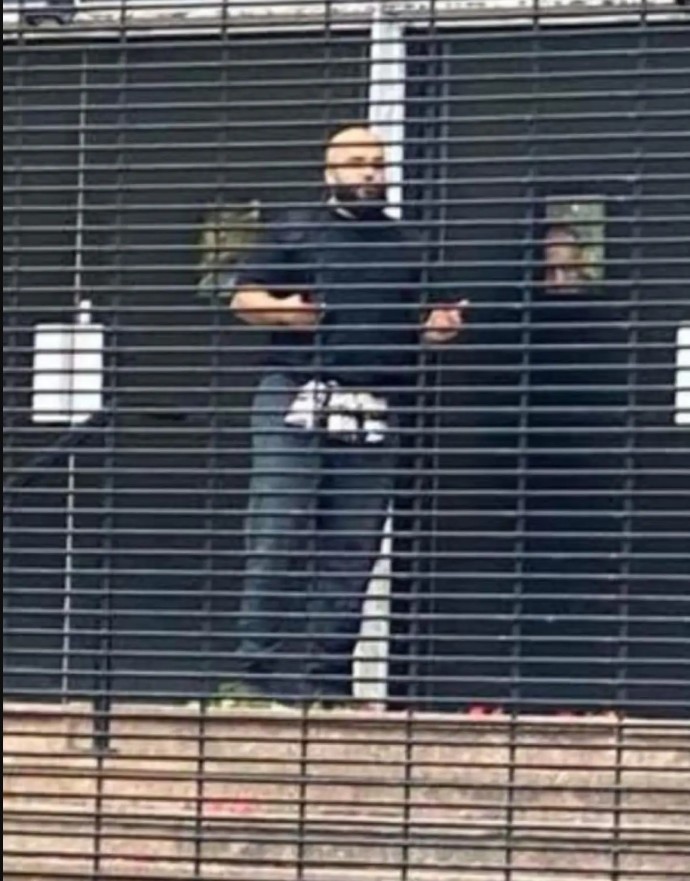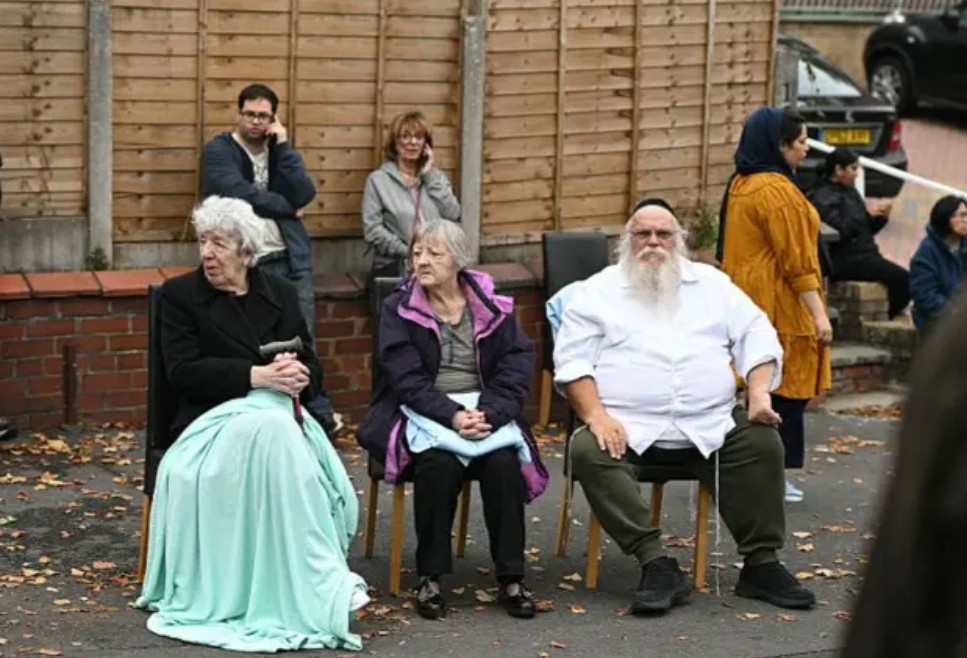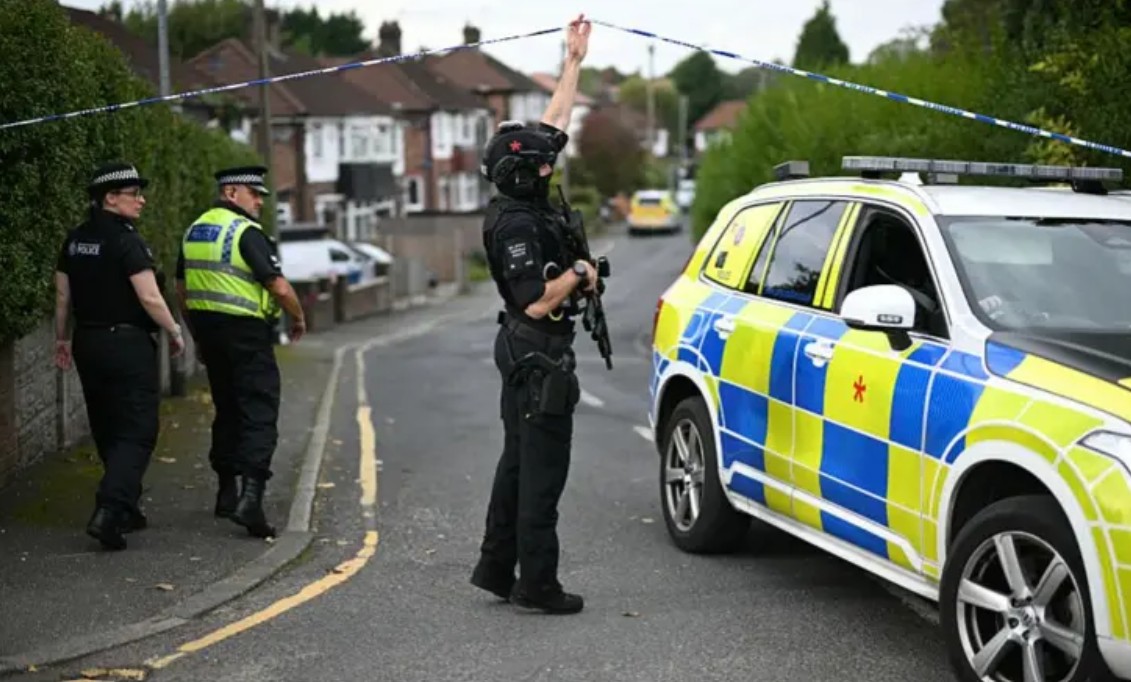Manchester Synagogue Stabbing Attack Shooting Video
On Thursday morning, tragedy struck Manchester when a synagogue became the target of a brutal terror attack on the holiest day of the Jewish religious calendar. Two Jewish worshippers lost their lives and three others sustained serious injuries after a car ramming and stabbing outside the Heaton Park Hebrew Congregation Synagogue in north Manchester. Police quickly confirmed that the assault was being treated as a terrorist incident, sending shockwaves through the local Jewish community and the wider British public.

The attack, which unfolded within minutes, is already being remembered as one of the most devastating acts of violence against Jewish people in the United Kingdom in recent years. As details continue to emerge, here is a comprehensive look at what happened, who was involved, and the broader significance of the attack.
Contents
- 1 A Timeline of the Attack and Video
- 2 The Attacker: Identity and Background
- 3 Eyewitness Accounts: Chaos and Terror
- 4 Emergency and Security Response
- 5 Victims and Casualties
- 6 Graphic Evidence and Media Coverage
- 7 Political and National Response
- 8 Responses from Jewish Leaders and the Royal Family
- 9 Religious and Cultural Context
- 10 Ongoing Investigation and Broader Implications
A Timeline of the Attack and Video
Events began to unfold around 09:31 BST when emergency services received calls reporting that a car had been deliberately driven into worshippers outside the synagogue. Witnesses also described a man brandishing a knife and launching a stabbing spree against members of the congregation.
Full Uncensored Video of the Manchester Crime Scene Leaves People Disturbed
Police declared a major incident almost immediately, deploying armed response units to the scene. Within seven minutes, at 09:38, officers had located the attacker, confronted him, and fatally shot him after he ignored warnings to drop his weapon.
By 10:30 BST, Manchester Mayor Andy Burnham stated that the “immediate danger appeared to be over,” though he urged the public to continue avoiding the area while the police response unfolded. Later in the afternoon, Greater Manchester Police confirmed that two people had died, while three others remained hospitalized with serious injuries.
The Attacker: Identity and Background
Authorities have identified the suspect as Jihad Al-Shamie, a 35-year-old British citizen of Syrian descent. He entered the UK as a child and was granted citizenship in 2006.
Al-Shamie was wearing what appeared to be an explosive vest during the attack, raising fears of a suicide bombing. However, bomb disposal experts later confirmed the device was not viable. His name did not appear in initial police or security service counter-terrorism records, and he was not believed to have been under active investigation at the time.
In a significant development, police later arrested three other individuals on suspicion of terrorism offenses two men in their 30s and a woman in her 60s. Investigators are now working to establish whether Al-Shamie acted as part of a wider network or as a lone attacker influenced by extremist ideology.
Eyewitness Accounts: Chaos and Terror
The sudden violence left worshippers and passersby traumatized. One local resident, Shah, recalled driving past the synagogue and witnessing the terrifying moment the car sped toward a group of people. “The man was just running out with a knife and he just started going on a bit of a rampage,” she said. “It’s quite terrifying to be completely honest.”

Another eyewitness, delivery driver Gareth Tonge, described the moments leading up to the police intervention. He said he saw a man bleeding on the floor and then witnessed armed officers confront the suspect. “They gave him a couple of warnings, he didn’t listen, so they opened fire,” Tonge explained. Even after being shot, the attacker attempted to rise again before being struck down by further gunfire. Tonge described the incident as “nerve-racking” to watch.
Inside the synagogue, hundreds of worshippers had gathered for Yom Kippur services. Police later praised the bravery of both security staff and members of the congregation, who managed to stop the attacker from entering the building itself, potentially preventing even greater loss of life.
Emergency and Security Response
The swift response from police and emergency services was a defining factor in limiting casualties. Officers declared “Operation Plato”, a national emergency protocol designed for marauding terrorist attacks. This triggered a coordinated response across fire, ambulance, and specialized counter-terrorism units.

An SAS helicopter, nicknamed “Blue Thunder,” was deployed over the area, part of the UK’s airborne counter-terrorism capability. Bomb disposal teams examined the attacker’s body and clothing to ensure there was no further threat.
The area around the synagogue was cordoned off, and worshippers were held inside until police declared the scene safe. The incident highlighted both the vulnerability of places of worship and the effectiveness of rapid emergency procedures in preventing wider carnage.
Victims and Casualties
Police later confirmed the grim toll: two Jewish worshippers had been killed. Three others suffered injuries of varying severity.
One individual sustained stab wounds during the attack.
Another was struck by the attacker’s vehicle.
A third arrived at hospital later with an injury believed to have occurred during the police intervention.
Authorities have not yet released the identities of the deceased or injured, as families are still being informed. The Jewish community in Manchester, one of the largest in the UK, has been left reeling in grief.
Graphic Evidence and Media Coverage
Images and videos from the attack quickly spread online, with the BBC verifying some of the material. A widely circulated clip shows two armed officers pointing weapons at a man lying on the ground. When the man attempts to rise, sharp cracks of gunfire are heard, and he collapses again.
Other images depict bomb disposal technicians inspecting the suspect’s body, underscoring initial fears that he may have been carrying explosives. The circulation of such graphic content has reignited debates about the ethics of sharing violent footage on social media, especially during live police operations.
Political and National Response
The attack drew immediate condemnation from leaders across the political spectrum. Prime Minister Sir Keir Starmer described it as “horrific,” noting that the timing on Yom Kippur made it “all the more appalling.” He cut short his attendance at a summit in Denmark and returned to London to chair an emergency meeting of the government’s Cobra committee.
Starmer also announced that extra police assets would be deployed at synagogues nationwide to reassure Jewish communities and deter further violence. “We will do everything to keep our Jewish community safe,” he pledged.
The Home Secretary said she was “horrified” by the news and was receiving regular updates from Greater Manchester Police. Meanwhile, Conservative leader Kemi Badenoch labeled the attack “an outrageous assault on the Jewish community on their holiest day,” calling it “vile and disgusting.”
Responses from Jewish Leaders and the Royal Family
Chief Rabbi Sir Ephraim Mirvis delivered a heartfelt statement, describing the attack as the “tragic result of an unrelenting wave of Jew hatred on our streets, campuses, on social media and elsewhere.” He lamented: “This is the day we hoped we would never see, but which deep down, we knew would come.”
From Buckingham Palace, King Charles III and Queen Camilla expressed their sorrow, stating they were “deeply shocked and saddened to learn of the horrific attack in Manchester, especially on such a significant day for the Jewish community.”
The broader Jewish community across the UK and Europe has been shaken, with leaders emphasizing the urgent need for vigilance and solidarity.
Religious and Cultural Context
Yom Kippur, often referred to as the “Day of Atonement,” is the holiest day in Judaism. It is a solemn occasion marked by fasting, prayer, and reflection. Many Jews who do not regularly attend synagogue make a point of doing so on this day, which is why the building was particularly full at the time of the attack.
Work is forbidden, and the day is dedicated to atonement and seeking forgiveness. For an attack to take place during this sacred observance has amplified the sense of violation and trauma felt by Jewish people across the world.
Ongoing Investigation and Broader Implications
Investigators are now piecing together the attacker’s background, his potential motives, and any extremist affiliations. Counter-terrorism officers are combing through surveillance data, communications, and online activity to determine whether Al-Shamie acted alone or with external support.
The arrest of three additional suspects suggests the possibility of a wider network. Forensic teams are analyzing the vehicle and weapons used, while intelligence services are reviewing records of past investigations to see if any overlooked connections exist.
The attack has reignited debates about antisemitism, the adequacy of security at religious sites, and the challenges of identifying radicalized individuals before they act. It has also prompted calls for increased protection of Jewish communities across the UK, echoing similar concerns raised after past attacks in Europe, such as the 2019 synagogue shooting in Halle, Germany.
The Manchester synagogue attack stands as a sobering reminder of the persistent threat posed by extremist violence and the rising tide of antisemitism. Striking on Yom Kippur, the holiest day of the Jewish year, it was not only an assault on individuals but also a symbolic attack on faith, identity, and community.
The bravery of worshippers and the swift response of police prevented even greater loss of life. Yet the trauma will linger for the victims, their families, and the Jewish community at large. As investigations continue, the attack underscores the urgent need for vigilance, solidarity, and decisive action against all forms of hatred.
In the words of Chief Rabbi Ephraim Mirvis, this was “the day we hoped we would never see.” Britain now faces the challenge of ensuring it is also the day that catalyzes stronger protections for all communities vulnerable to violence and hate.
Daily News -Susanna Gibson Payne Video and From Political to Scandal
Thailand Pickup Truck Original Video and Sparked Outrage
Hey Kayla How You Doing Original Video and Hi Kayla No Blur
Ryan Easley Tiger Video and Tragedy at Growler Pines
Younglo Instagram Story Video Sparks Uproar and Controversy
Edwin Cruz Gomez Video and the Death of Jhoanny Gomez-Alvarez
Tyler Robinson Video in the Fatal Shooting of Charlie Kirk

